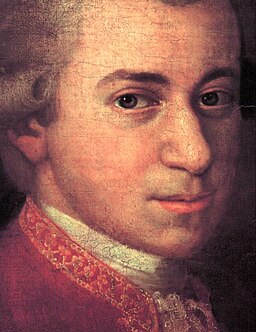
The Magic Flute, Mozart’s bizarre two act comic opera, can be seen as a fairy tale battle between the forces of darkness and light. Like all good fairy tales, at the end of The Magic Flute’s second act, love and happiness triumph. The Singspiel opera (featuring singing as well as spoken dialogue) was written in the prolific final year of Mozart’s life. It premiered in 1791 at the popular Theater aug der Wieden on the outskirts of Vienna. Amid its convoluted story, Masonic symbolism, Enlightenment philosophy and sly political references (the sinister Queen of the Night might be a coded allusion to Austrian Empress Maria Theresa), is Papageno, the bird catcher. He isn’t exactly a main character, but he’s there, nonetheless, through most of the opera (read the synopsis here). In the first performance the role was sung by the opera’s librettist, Emanuel Schikaneder.
Mozart’s music tells us everything we need to know about Papageno as a character. He’s a clownish buffoon, decidedly unheroic, who tries to lure birds with his panflute. But, as the music suggests, he also exhibits a vivacious and contagious passion for life. He’s imperfect, yet amiable and we can relate to him. Here is “Der Vogelfänger bin ich ja” (The birdcatcher am I) from the first scene of Act 1:
You might remember the next excerpt from the movie, Amadeus. Here is “Ein Mädchen Oder Weibchen” (A maiden or a wife), in which Papageno longs for female companionship:
At the end of The Magic Flute, Papageno’s magic bells summon Papagena. The couple dreams of the many future children they will have.
The Magic Flute Overture
Mozart and Schikaneder were both Freemasons and lodge brothers. Judith Eckelmeyer’s analysis of The Magic Flute includes a discussion of the work’s Masonic symbolism as well as the use of the “golden mean” and attention to mathematical proportion. Three is a significant number in Masonic symbolism, and patterns of three occur throughout the opera. In the middle of the overture listen for three repeated chords.
Here is James Levine and the Metropolitan Opera Orchestra:
https://www.youtube.com/watch?v=h018rMnA0pM
[unordered_list style=”tick”]
[/unordered_list]
Neither a lofty degree of intelligence nor imagination nor both together go to the making of genius. Love, love, love, that is the soul of genius.
The music is not in the notes, but in the silence between.
-Wolfgang Amadeus Mozart

